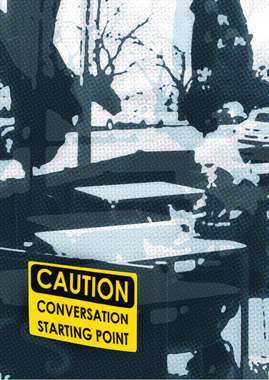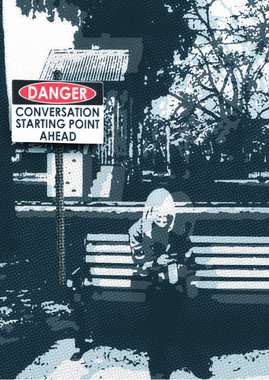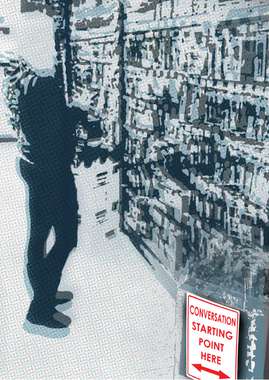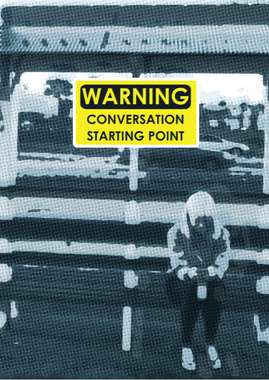Meeting With Dialogue
Files
This work has not been commented by curators.
Title
Meeting With Dialogue
Headline
Meeting With Dialogue
Concept author(s)
Ashlen Gloury
Concept author year(s) of birth
1994
Concept author(s) contribution
Photography and digital compositions all complete by Ashlen Gloury.
Concept author(s) Country
Australia
Designer(s)
Ashlen Gloury
Designer(s) year(s) of birth
1994
Designer(s) contribution
Photography and digital compositions all complete by Ashlen Gloury.
Designer(s) Country
Australia
Copy author(s)
Ashlen Gloury
Copy author(s) year(s) of birth
1994
Copy author(s) contribution
Photography and digital compositions all complete by Ashlen Gloury.
Friendly Competition
Radical intimacies: dialogue in our times (2014)
Competition category
Visual communication practice
Competition subcategory
static
Competition field
academic
Competition subfield
student
Subfield description
Federation University Ballarat. Bachelor of Visual Arts: Graphic Design and Multimedia
Check out the Radical intimacies: dialogue in our times 2014 outlines of Memefest Friendly competition.
Description of idea
Describe your idea and concept of your work in relation to the festival outlines:
In a world obsessed with new technology and new devices dialogue is indeed failing across all generations. We have developed into a culture where we are constantly immersed in technology with our gadgets having an uneasy amount of control over us. These devices are massive advances in technology, although these advances have come with setbacks in other areas, particularly in communication and dialogue.
Places that were once locations for meeting new people or catching up with old friends have become areas immersed in technology making communication almost impossible.
My concept focuses on the places that dialogue fails rather than the reasoning behind failed dialogue. It uses these locations as a means to promote good communication. Commenting on dialogue through signage, I was able to take a previous method of communication and place it in a different situation creating a completely different feel. Using language such as “warning” and “caution” draws attention to the message, also aided through the colour and placing of the signage.
What kind of communication approach do you use?
The communication approach used reflected on the manipulation of everyday road and street signs. This was purely as a means of attracting attention from the public due to the brightness and importance of signage and wayfinding methods.
What are in your opinion concrete benefits to the society because of your communication?
The communication forces the viewer to be immersed in it. It requires a reaction from the audience. It has a way of making the viewer think further about their infatuation with mobiles and other devices and emphasizes the viewers immersion in the digital world. This in turn reflects badly on the dialogue between two people in meeting situations or places of interaction.
What did you personally learn from creating your submitted work?
I have personally learnt how much I am actually immersed in a digital world. Therefore I am missing out on human interaction and situations of face-to-face communication. I was also shocked at the expense the average person spends on items such as mobile phones, tablets and computers. The world is slowly turning into a complete digital world, with those failing to commit being left behind.
Why is your work, GOOD communication WORK?
This piece of good communication work, although simplistic supplies the viewers with a clear piece of communication that discourages the use of digital devices in public places, one of the main reasons of failing dialogue. It is creative as it recycles previous examples of design that have for years been proven effective and highly noticeable. The message provided is clear and will be understood from all generations.
Where and how do you intent do implement your work?
The communication is intended to be displayed in public places, particularly those where people meet and may spend time waiting for example bus stops, waiting rooms, cafes, bars or supermarkets. The displacement of warning and caution signs will have effect on the public due to the nature of these signs. The signs are used to encourage people to pay attention.
Did your intervention had an effect on other Media. If yes, describe the effect? (Has other media reported on it- how? Were you able to change other media with your work- how?)
My idea for the festival was the adaption of signage to suit the theme dialogue. For presentation purposes they have been displayed in a poster format. The concept could carry across various platforms from signage to stickers or billboards. The media is irrelevant as the key focus of this concept is for the public response.








